Jones Field: The pre-WWII Days
In the 1890s George Jones and his wife, Bennie, moved as a young couple to Bonham to make a life for themselves. George worked as a contractor specializing in painting and decorating, while Bennie kept very busy as a housewife.
By 1895 their first born, a son they named Charles, arrived. Roughly five years later the second and last child, a daughter named Madeline, was born.
Although the sun ultimately shined bright on Charles, he apparently got off to a rather bumpy start. Grade books from the 1909-10 and 1910-11 years at Bonham High School show that he failed the eighth grade – twice. (At that time eighth grade was the freshman year since students went through only eleven grades. Texas went to twelve grades in the late 1940s.) After the 1910-11 year, Jones fell off the map. There is no mention of him in the official records.
His youthful days were also spent driving “a wagon for the American Railway Express Company,” according to the January 13, 1929 Dallas Morning News. “Recognizing his ability,” the article further stated, “the company placed him in the accounting department.”
As odd as it may sound for a youngster with lousy grades, accounting was Charles Jones’s strong point. His World War I draft registration form, dated January 1917, shows him married and working as an accountant for a firm in El Paso. Census records show the same for 1920. The April 13 Dallas Morning News further reported that Jones went on to become “a member of an accounting firm in California, then he became associated as a partner in a large oil company in California, by reason of which he is said to have amassed considerable wealth.”
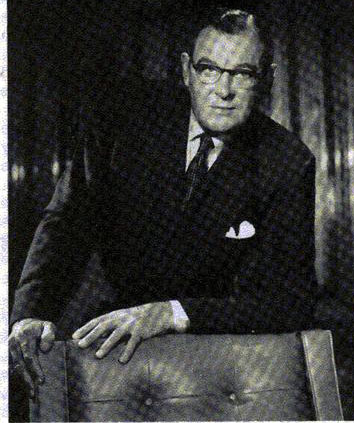
In the midst of Charles’s success came tragedy when his father, George, died on May 13, 1924 at the relatively young age of 49. For Charles it was quite a setback.
In the late twenties Charles Jones coupled a desire to honor his father’s memory with an interest in a new found passion - flight. The Bonham Daily Favorite of November 26, 1928 carried a big headline announcing that Jones was giving a $10,000 dollar gift to the city to be placed in a trust towards building an airport. In a statement accompanying the gift, Jones noted: “Said airport is in a manner established as a memorial to my deceased father, Geo. W. Jones.” The city then made plans to match the generous contribution.
By early spring 1929 the project was taking shape. The March 23rd Daily Favorite noted that the Department of Commerce had given a green light to “the Fuller tract,” a site of over 100 acres north of town.
Perhaps to illustrate how good it would be to have air traffic in the area, on Saturday, April 6, Charles Jones flew over Bonham in one of the more impressive airplanes of the time, a Fokker tri-motor. That day’s Daily Favorite stated that the big plane flew “all over the city, not forgetting North Center street, where Aunt Bet and Uncle Hade Whitsett and Grandma Stone, grandmother of Charles Jones, sat on the front porch to watch the big ship . . . .” The article further noted that Bennie Jones, Charles’s mother, was in the plane enjoying the flight.
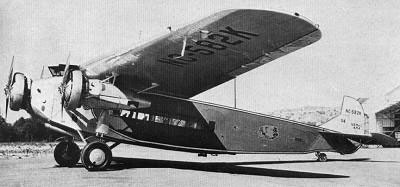
If Jones hoped his flight would add enthusiasm to Bonham’s push for an airport, it apparently worked. Two months later all appeared on the fast track. The Daily Favorite of June 19 reported that land for the proposed facility had been secured.
Roughly one month later the city council, in its July 12 meeting, voted to buy 131 acres north of Bonham from a local gentleman named Lonnie C. Fuller. The minutes of the meeting states that the land was to be “used as an Air Port . . . .” It further states that any of the land not used for the airport would revert to Charles Jones. The whole transaction became official in late July and is recorded on page 295 of Deed Book 205 in the records office of the county courthouse.
Shortly after the July council meeting, a key leader in the air transport business in Texas came to Bonham. The July 17 Daily Favorite reported that Mr. A. P. Barrett, head of the Fort Worth-based Texas Air Transport Company, looked over the proposed site along with other company officials and Mayor L. K. Crawford. “Mr. Barrett declared,” reported the article, “that one can not visualize the possibilities of airplane service for mail, passenger and freight service. He said that within a few months after the airport is built here scores of planes will be coming here from all over the country, and mail will leave Bonham every day for all parts of the country.” (This was actually Barrett’s second recent trip to the city. On April 12 he spoke at a Bonham Chamber of Commerce meeting about the need for an airport. While the April 13 issue of the Daily Favorite carried nothing about Barrett’s speech, it did reprint a big article from Air Travel News magazine which touted the business genius of A. P. Barrett. Mere coincidence, right?)
The article finally stated that when the airport opened, Barrett’s “company would send a fleet of 20 or more airships to Bonham to participate in the opening exercises.”
Work on the site began shortly after Barrett’s visit. The September 19 Daily Favorite noted that work on leveling and preparing the land was being done by a local contractor, Jim McDowell, and a large force of men.
The September 27 paper reported that work was continuing, and that the official name might be The Jones Bonham Municipal Airport. It ultimately became known as Jones Field.
By early November finishing touches were being put on the facility. The official grand opening was held on Monday, November 11, 1929, Armistice Day. Unfortunately, precise details of the festivities are unknown. The Bonham papers from late 1929 are not available, and other area papers failed to cover the event. It undoubtedly was a big event, complete with tons of spectators and several planes and pilots looking their best.
One major structure still missing was a suitable hangar. The December 15 Dallas Morning News reported that the contract to build the hangar went to the local firm of Allen & Bragg.
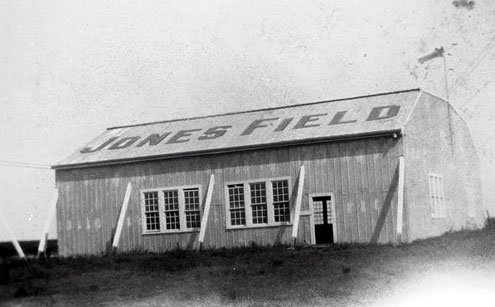
In addition to the hangar, other structures to be built were a “home for the keeper, a filling station and graveled driveways . . . .”
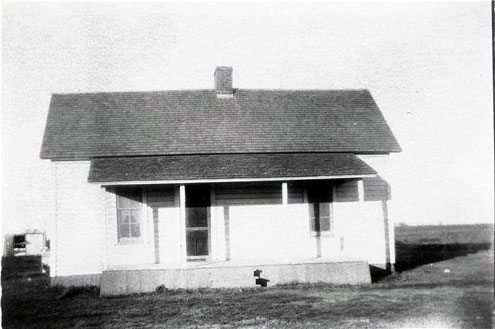
All was apparently flying high at Jones Field by mid 1930. The June 17 Dallas Morning News reported that a “franchise on the Bonham airport has been obtained by Texas Aero Service and College of Dallas, which company is opening a branch school and taxi service in that city . . . .” It further reported that two “Eaglerock planes were placed in service at Bonham” and that a “passenger taxi service was opened between Bonham and Dallas . . . serving Texarkana, Denison, Honey Grove, Sherman and McKinney.”
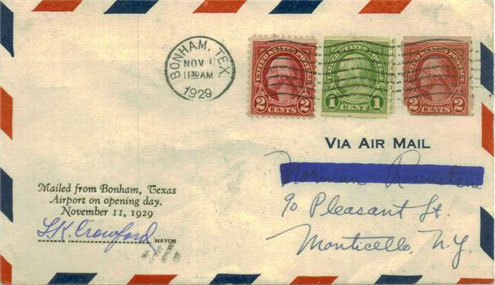
Apparently flights between Bonham and Dallas became the norm. The August 16 News carried a short piece noting flights in and out of the city that day. Among them was a J. H. Cobb who had flown a “three-place biplane” from Bonham to Love Field and back.
By late August Jones Field was seeing perhaps its first air show. The Dallas News of August 28 noted that a good will mission of military planes left Dallas for visits to Bonham and Sherman. “Eleven United States Army planes,” it reported, “bearing regular and reserve air officers . . . hopped off from Hensley Field at about 11a.m. Bonham was reached in about an hour and there the airmen had luncheon with the Bonham Rotary Club. Mayor L. K. Crawford of Bonham was chairman of the day.”
By 2:30 the planes left for Sherman.
Throughout the 1930s the routine at Jones Field remained pretty much the same. Planes flew in and out carrying passengers, freight and mail. There were also the occasional barn stormers who came in and provided low-cost flights to brave passengers with a little money to spend. For a small North Texas town, it was quite the little airfield.
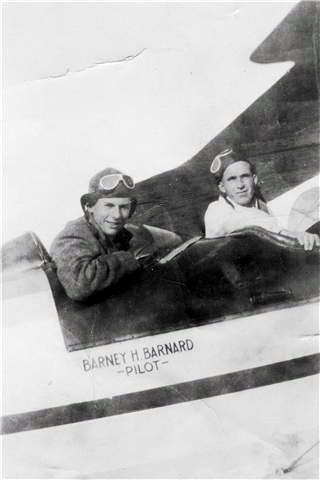
Charles Jones was surely proud, and George W. no doubt would have been.
All black and white photos of Jones Field, planes, pilots, etc. are circa early 1930s and are courtesy of Mr. Bill Griffis, Bonham. Many thanks to him.
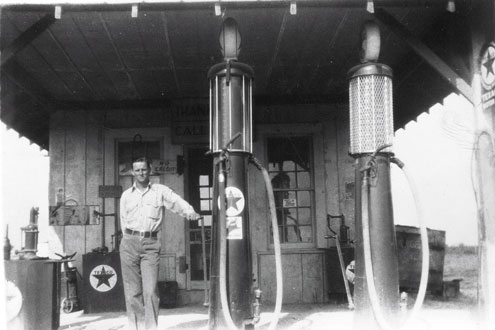
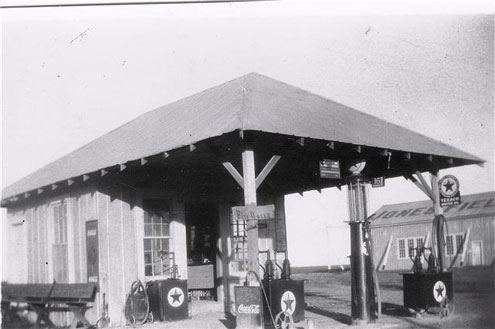
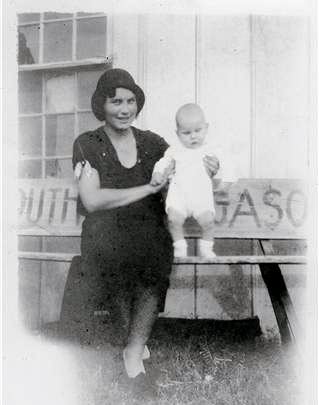
Many thanks also to Suzie Henderson for internet help, and to the ladies at the Bonham Public Library for help in securing materials.
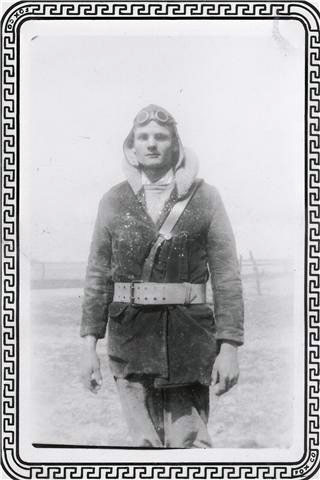
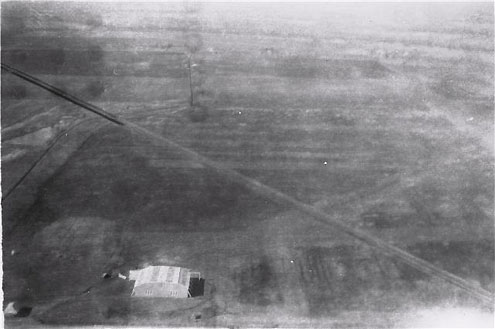
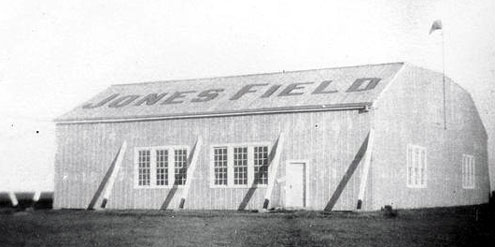
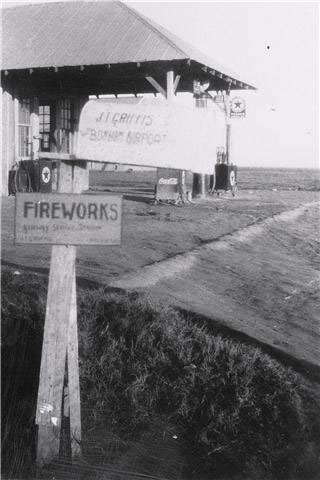
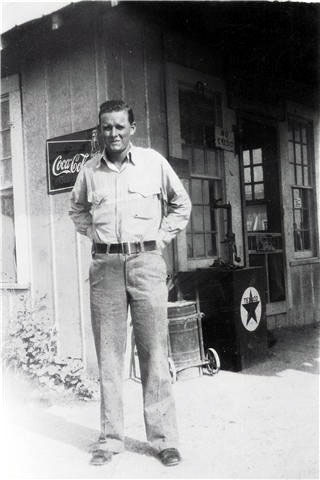
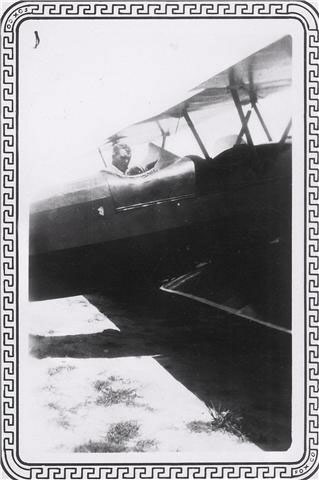
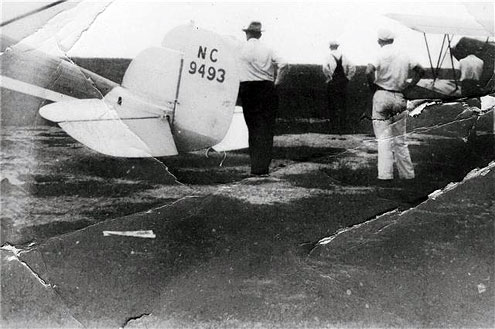
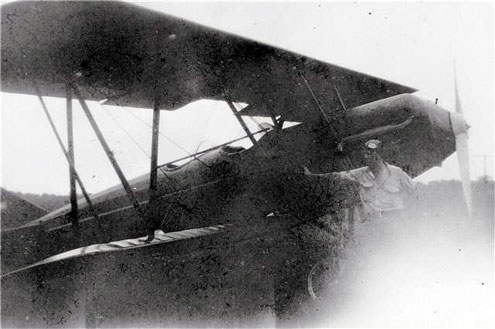
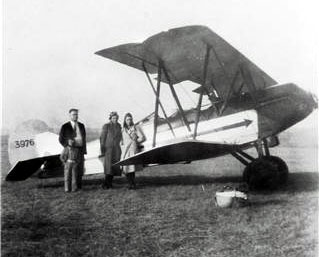
Tim Davis teaches at Bonham High School.